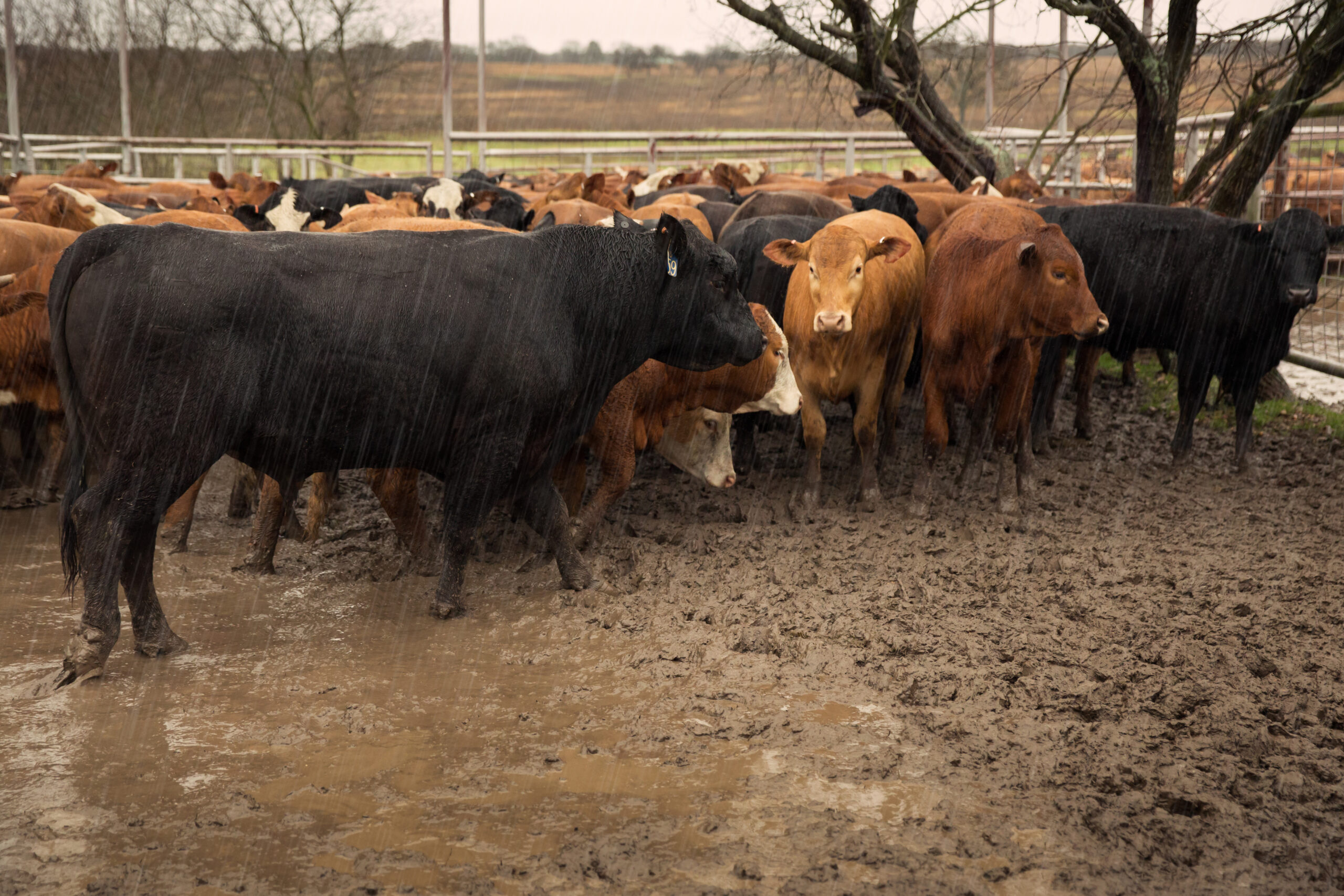Farm & Ranch
Foot Rot in Cattle

By Barry Whitworth, DVM
The Monthly Precipitation Outlook found at the Mesonet website (https://www.mesonet.org) is predicting above normal chances for precipitation for the month of June for most of the area. Many areas have received much needed rain in the past few weeks. With moist conditions, producers should be observing their cattle for foot rot.
Foot rot is caused by Fusobacterium necrophorum subspecies necrophorum and sometimes other bacteria are involved (Porphyromonas levii, Prevotella intermedia, Staphylococcus aureus, Escherichia coli and Truperella pyogenes). These bacteria are normal inhabitants of the digestive tract of cattle and consequently in the environment. The problem arises when the bacteria enter the tissue of the foot through a break in the skin. The damage to the skin may be from puncture wounds or abrasions or continuous exposure to wet conditions which softens the skin. Once the bacteria gains entry into the tissue, it multiplies and releases toxins that damage tissue. If left unchecked, the bacteria invade deeper structures in the foot. This may result in permanent problems and may shorten the life of the cow.
Diagnosis of foot rot begins with a thorough examination of the foot. Foot rot lesions usually infect both claws, so if only one claw is infected, the problem is not likely foot rot. Producers should look for signs of swelling between the toes as well as redness or necrotic tissue. Also, observe for separation of the skin at the hoof wall. Most cases of foot rot will have a foul spelling odor. The foot may feel warm to the touch. This distinguishes foot rot from fescue foot which is cold to the touch. Cows may have a fever and refuse to eat. Most cows are reluctant to bear weight on the infected foot due to pain.
To read more, pick up a copy of the July issue of NTFR Magazine. To subscribe call 940-872-5922.
Farm & Ranch
Acorn Toxicity

By Barry Whitworth, DVM, MPH
With the prolonged drought, most pastures in Oklahoma end up in poor condition. With the lack of available forage, animals may go in search of alternative foods.
If oak trees are in the pastures, acorns may be a favorite meal for some livestock in the fall. This may result in oak poisoning.
Oak leaves, twigs, buds, and acorns may be toxic to some animals when consumed.
To read more, pick up a copy of the November edition of North Texas Farm & Ranch magazine, available digitally and in print. To subscribe by mail, call 940-872-5922.

Farm & Ranch
Silver Bluestems

By: Tony Dean
There are a handful of grasses on North Texas grazing lands ranchers need to know, not because they are highly desirable, but rather because they are not of much value. I call them “decom” plants, which is am acronym for “Don’t Ever Count On Me.” Silver bluestem is a “decom” grass.
Silver bluestem is a perennial which grows in all areas of Texas. It can survive in almost all soil types, and in full sun conditions or in semi shade. It grows up to three feet tall and is easily recognized with the presence of the white fuzzy seed head. Also, one of the identifying characteristics of Silver bluestem is a bend in the stems at each node, causing the plants to take on a rounded shape as they mature.
To read more, pick up a copy of the November edition of North Texas Farm & Ranch magazine, available digitally and in print. To subscribe by mail, call 940-872-5922.

Farm & Ranch
Meanwhile Back At The Ranch

By: Rayford Pullen
Fall is here which means winter is closing in on us and before we officially get into winter, we need to make sure our factories are either producing or will be producing in a few months.
We have been pregnancy testing our cows this fall and if they are not bred or nursing a calf, we are bidding them adios. With annual costs somewhere between $900.00 and $1,000.00 per cow, those cows not producing a live weaned calf are costing us quite a bit.
To read more, pick up a copy of the November edition of North Texas Farm & Ranch magazine, available digitally and in print. To subscribe by mail, call 940-872-5922.
-

 Country Lifestyles2 years ago
Country Lifestyles2 years agoScott & Stacey Schumacher: A Growth Mindset
-

 Country Lifestyles8 years ago
Country Lifestyles8 years agoStyle Your Profile – What your style cowboy hat says about you and new trends in 2017
-

 HOME8 years ago
HOME8 years agoGrazing North Texas – Wilman Lovegrass
-

 Equine1 year ago
Equine1 year agoThe Will to Win
-

 Country Lifestyles5 years ago
Country Lifestyles5 years agoAmber Crawford, Breakaway Roper
-

 Outdoor9 years ago
Outdoor9 years agoButtercup or Primrose?
-

 Country Lifestyles8 years ago
Country Lifestyles8 years agoJune 2016 Profile – The man behind the mic: Bob Tallman
-

 Country Lifestyles8 years ago
Country Lifestyles8 years agoDecember 2016 Profile, Rusty Riddle – The Riddle Way




